![]() The “tactical shooting” training industry has grown exponentially over the last decade plus …
The “tactical shooting” training industry has grown exponentially over the last decade plus …
From a few schools, generally run by competitive IPSC/IDPA or Three-Gun shooters or by former LEO with some military background in there years before, we’ve seen an industry grow, with thousands of schools, ranging from mom-and-pop operations run by some local fellow, to a major growth in schools run by military SOF veterans with known, bona fide mankilling credentials. While the merits of one versus the other are certainly open to debate, one thing has really leapt out at me, as I watched this growth occur.
We spend a lot of time, as teachers—if we’re any good at it, at least—telling people to “focus on the fundamentals,” and “there are no advanced gunfights.” Despite that, there seems to have been an interesting trend to move away from the basic, fundamental drills that most of us practiced as we were learning the skills, to more “advanced,” “dynamic” drills. The most obvious of these is the trend to get away from simple “snap drills,” often derided as “UP! Drills,” after the shooter command of, “Shooter, ready?…and…up!” I’ve watched as guys coming out of a variety of units, with legit backgrounds as shooters, both SOF and Big Green, do anything they can to move away from this very basic, almost mind-numbingly monotonous drill. I understand that the basic snap drill can be overused, but almost too often, it has become underutilized, leaving many of its greatest benefits laying in the dust with the bathwater.
How is that possible? Trainers had a tendency to rely on the drill—especially in the military, but no less in the civilian training industry—because it’s simple, easy to run on a square range with a large number of moderately—or even barely—trained shooters. That’s good, because it’s actually a very useful drill. In many ways, in fact, it is the single most useful drill we have for teaching effective combat shooting, whether with carbine or pistol.
The problem arises due to a lack of understanding of how to leverage the maximum amount of benefit out of that drill. When it simply becomes a rote thing, with no metric for performance and improvement, then it loses the vast majority of its potential for benefit.
The Benefits
So, how can the most basic, beginner level close-quarters marksmanship drill actually be the most important drill available? Well, as any good shooter—and all the great shooters—will tell you, advanced shooting skill is simply a mastery of the fundamentals. That’s obvious though, right?
The fact is, the single most important shot you will take in a fight, regardless of all other contextual considerations, is the first shot you fire. It doesn’t matter what gun you’re running. That shot needs to be accurate enough, and arrive soon enough, to rob the opposition of the initiative. So, developing speed and accuracy for that first shot is critical. The best way to do that? Master the snap drill, and make it a religious part of your practice regimen.
What about all the cool-guy, go-fast drills that have you performing mag-dump after mag-dump on the range, focused on split-times, transitions between targets, and all the other “chicks-dig-it,” Jedi gunfighter tricks? I’m not saying those are unimportant. What I am saying is this;
1.) If you smoke your first round into the dude’s grape…or, well, pretty much anywhere on his body, there is a significant chance that it is going to interfere with his actions long enough to buy you a margin of time. If your split-times between follow-up shots are slow, but you’ve “interrupted his OODA loop” (I’ve really grown to hate that term!!!) by putting a hole in him, guess what? You’re probably going to get a chance to shoot him again, even with a slow split-time.
Yes, you should be able to engage with multiple, aimed rounds, at a high rate of fire, in order to “shoot him to the ground.” Nevertheless, getting that first hit on meat will go a long way towards allowing you to get the others, even if you’re not a Master or Grandmaster competitive shooter.
2.) One of the most important things we learn when we do the snap drill correctly, is exactly how much precision we need, in order to get as fast as we can get, at different ranges. I need a lot less precision with my carbine, to get a head shot, in less than one second, at 10 meters, than I do to get a torso shot in less than one second, at 100 meters. This carries over to target-to-target transitions, because our neural pathways, between eyes, brain, and trigger finger, are being exercised and trained to recognize how much is “enough.” Accuracy and precision are critical, but there is a lot of truth to the old adage that, “perfect is the enemy of good enough.”
3.) Building the neural pathways to build a solid, stable, durable, firing position that allows you to get a fast, first-round hit at various ranges, will facilitate all the other shooting skills you need with that particular weapon.
How Do I Do It Right?
The first step in utilizing snap drills to their full benefit is establishing metrics. How are you going to define success. Just by hitting a silhouette? That’s a standard that caused a whole load of heartache within most of the military, when after-action reviews started coming back, that recognized the importance of precision in close-quarters marksmanship in places crowded with no-shoots, like a house in downtown Baghdad, full of women and children.
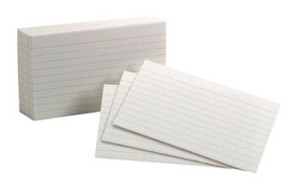 Seriously, being able to hit a silhouette at 10-25 M is a really, really bad joke. It’s so far beyond simple that it’s below inadequate, if you consider yourself a trained shooter. Step one then, should be defining a more stringent metric for accuracy. I firmly believe, if you’re aspiring to “trained shooter” status, at distances out to 10-25M, or closer, a target the size of an index card should be the metric. For casual shooters, or the average student, “simply” concerned about home defense, I MIGHT be willing to concede that A-Zone hits on an IPSC silhouette are adequate. I tend to be lazy, and don’t like to walk downrange after every shot to record, so I tend to resort to using a 6” steel plate at anything over 10 meters, which is still roughly half of an A-Zone.
Seriously, being able to hit a silhouette at 10-25 M is a really, really bad joke. It’s so far beyond simple that it’s below inadequate, if you consider yourself a trained shooter. Step one then, should be defining a more stringent metric for accuracy. I firmly believe, if you’re aspiring to “trained shooter” status, at distances out to 10-25M, or closer, a target the size of an index card should be the metric. For casual shooters, or the average student, “simply” concerned about home defense, I MIGHT be willing to concede that A-Zone hits on an IPSC silhouette are adequate. I tend to be lazy, and don’t like to walk downrange after every shot to record, so I tend to resort to using a 6” steel plate at anything over 10 meters, which is still roughly half of an A-Zone.
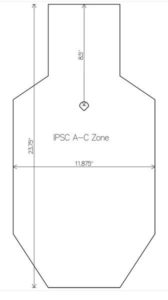 At 50-100 meters, I believe that a C-Zone silhouette is adequate for most purposes and most people. If you look at the size of it, it is roughly the same size as the center portion of the upper thoracic cavity of an adult male. That’s “enough” precision, even at 200 meters. If you end up being a little outside in the real world? A rifle round will still ruin his week, and still slow him down enough to allow you a follow-up shot. Further, there’s nothing stopping you from using a smaller target, once you’ve gotten consistent on the C-Zone. When I got to the point that I could hit the C-Zone in less than 1.00 seconds, 99% of the time, I graduated to shooting an 8” plate.
At 50-100 meters, I believe that a C-Zone silhouette is adequate for most purposes and most people. If you look at the size of it, it is roughly the same size as the center portion of the upper thoracic cavity of an adult male. That’s “enough” precision, even at 200 meters. If you end up being a little outside in the real world? A rifle round will still ruin his week, and still slow him down enough to allow you a follow-up shot. Further, there’s nothing stopping you from using a smaller target, once you’ve gotten consistent on the C-Zone. When I got to the point that I could hit the C-Zone in less than 1.00 seconds, 99% of the time, I graduated to shooting an 8” plate.
One issue that I’ve seen a lot in training classes that I’ve taught, is that we tend to have a traditional, American view of marksmanship as being, “I kin shoot a gnat off a fly’s butt at 300 yards, by Gawd!” People are looking for far more precision than is necessary. Don’t get me wrong, I love shooting for precision. I start and finish every range session running dot drills to master marksmanship precision. Unfortunately, that level of precision needed to punch a one-hole group with ten rounds may take more time than we’re going to have available in a fight, when the other dude is trying to interject his opinions into the conversation. He isn’t likely to be nearly as concerned about precision, or bystanders, and even if he “just” shoots you in the leg or arm, it is likely to have a seriously detrimental effect on your precision anyway, so you have to learn to recognize what is “good enough,” and how to accept that.
Unremarkably, this issue most commonly arises, in my experience, when a fellow is running a magnified optic on a carbine. I love optics. I will never willingly move to the sound of the guns with a rifle that is not equipped with a decent, low-powered, variable optic. Unfortunately though, too often people don’t understand that just because you can be more precise with an optic doesn’t mean that doing so is always the right choice. This isn’t an attack on precision. As I noted above, once we’ve balanced “precise enough,” with “fast enough,” we can—and should—begin looking at tightening up how we define “precise enough.”
So, step one in correctly utilizing the snap drill is establishing an effective level of “precise enough.”
Once you have established your precision metric, stick to it, but start focusing on achieving it faster. How fast is “fast enough?” I can’t tell you. If you’re stuck fighting a guy who is not really committed, and is a lousy shot, five or six seconds might be “fast enough.” On the other hand, if you’ve got a trained, aggressive shooter, with a lot of gunfights under his belt, sub-1:00 might barely be fast enough…or it might not be fast enough at all.
For the carbine, generally speaking, I tell people that, realistically, from the standing, low ready, they need to be able to move into any given firing position, and engage a target of the above dimensions, with at least one aimed shot, in less than three seconds. Why?
Because, doctrinally, we teach the use of a 3-5 second rush, and under fire, that really does tend to shorten towards the three second end of the spectrum, for obvious reasons. If I can get a hit in less than three seconds, on a reduced-size target, when responding to an external cue (such as the start signal of the shot timer), and the dude takes three seconds to get to a position of cover, then I’ve got a pretty solid chance of getting at least one round into him. Whether that one round drops him where he is, or he gets to cover and then tries to move again, it’s still probably, generally, going to slow his roll a little bit, increasing the odds that I’m going to get to him again.
Anyone of reasonable health and fitness can achieve a sub-3:00 second first round hit snap drill, even if they’re dropping into the prone. Seriously, I’ve seen 60 year old, overweight grandmas, with heart conditions achieve it, in less than an hour of training. If you can’t? Take up cooking. You’ll be more useful to society, and you’ll live longer.
With a sidearm, especially your concealed carry piece—which, let’s be honest, we are far, far more likely to need to use, if we look at historical statistical precedence—there’s no reason that someone with a modicum of training and practice can’t hit a sub-1:50 draw to first shot—to an index card—at 10 yards/30 feet. Again, I’ve watched more than one grandmother do it, with very little training and practice.
Ultimately, you should be pushing those speed barriers, and exceeding them, as long as you’re still shooting “precise enough.” When you find a barrier that you can’t cross, without missing, it’s time to focus on solidifying your skill at that speed. Focus on performing the skill properly, at speed, and pretty soon, you’ll be able to break your new barrier. This is not about “how fast can I shoot?” It’s about “how fast can I shoot properly and effectively?” As the adage goes, “you can’t miss fast enough to win.”
The problem with the time metrics on the snap drill that has often arisen in the military, is the lack of emphasis on that metric. For entirely too long, the mantra has always been, “slow is smooth, and smooth is fast.” While appealing, it’s only partially true. Yes, in order to go fast, you’re going to have to have smooth, well-developed biomechanics. Unless you’re willing to push your speed until your biomechanics start becoming “not smooth,” though, and then focus on making them smooth again, at the faster speed, you’re just engaged in martial masturbation. It’s like doing strip mall dojo karate, with a gun.
The potential drawback to the time metric though, is when it becomes The Goal. That’s not the way it is supposed to work. It’s just a metric. It’s a way to measure performance. That’s the problem with standards. If you establish them low enough for people to achieve easily, they achieve that, and say, “Meh, I’m good enough. I met the standards.” If you set them high enough that they might actually be, “good enough,” then people get discouraged and give up. So, your “standard” should be “precise enough,” as fast as you can, and then, a little faster.
Of Carbines and Pistols
Most people are at least passingly familiar with the basic snap drill, in the variation of the “UP! Drill,” fired at close-quarters distances, with the carbine. Limiting ourselves to this however, does a great disservice to what is an excellent all-around shooting drill. While the basic standing snap drill should play an important role in your practice, there are other variations that are just as important. Some variations I like to incorporate include firing from different positions at different ranges.
For example, instead of limiting myself to 100 meters, from the standing, I might decide today, we’re going to start in the standing ready position, but we’re going to drop into the prone or squatting position, and shoot at 200 meters. Again, with even just a little bit of practice, I’ve seen people hit this in 2:00-2:50 seconds, consistently.
Another variation is with the concealed carry pistol. This is a regular portion of every single range session I do with my CCW pistol. At 30 feet, I’m trying to hit an index card, with one shot, as fast as I can, from the holster. I can consistently hit this in the 0.9-1.25 second range. I’ve seen other people hit 1:25-1:50 seconds, in a half-hour of trying, after insisting that it was impossible to draw from concealment in less than 2:00 seconds.
The point is not “look how cool I am.” The point is, these are metrics that are achievable, by real people, in real life, with varying levels of training and experience. Utilizing the basic snap drill, in different variations, allowed them to achieve a skill level—assuming they continue to practice it—that they previously though they were incapable of. It’s that important a drill.
It’s Not About Shooting Faster!
The purpose of the snap drill is not about shooting faster though. In the real world, shooting faster tends to have deleterious effects, like shooting the wrong person, because you shot before your brain could catch up and tell you that it is a twelve year Catholic school girl, not an MS13 gangster.
Our goal should be to shoot “sooner.” What’s the difference?
Shooting sooner is about working the problem correctly, and only making legitimate shots, as soon as possible. That requires more than a fast target acquisition and a quick trigger finger though. It involves knowing and understanding what the parameters are that allow for a legitimate shot, in your circumstances, and only then, breaking a fast, accurate shot. Being able to recognize what is “precise enough,” and then being able to deliver it “fast enough,” will allow you to shoot sooner, after the decision-making process has allowed you positively identify your target as a legitimate target. The time metric simply forces you to accept “precise enough,” instead of pushing for “absolute precision.”
Snap drills will help develop your ability to make the decision that “this is accurate enough,” at the speed you’re capable of making the hit. Whether it’s the first shot of the fight, or it’s the first shot on the last bad guy standing; even if it’s the second or third shot in a string of shots, to put some dude on the pavement, that recognition of “this is accurate enough,: is invaluably developed with snap drills, conducted to a time standard.
Conclusion
I am not suggesting that you shouldn’t perform other drills. The basic snap drill though, should be a bread-and-butter staple of your practice diet. It will increase your ability to deliver a solid, first shot hit that may allow you more of a window to get follow-on hits. It will increase your ability to recognize “this is accurate enough,” when “perfect is the enemy of good enough.”
I’ve repeatedly explained to students—and I believe it to the depths of my shooting soul—that, other than a firearm (and a holster, if we’re talking about handgun work), the single most important training tool you have available to you is a shot timer. While ammunition is obviously necessary for live-fire training, I’d take a guy who has a pile of good dry-fire training, on a shot timer, over the dude who has plinked at targets with live-fire, but has no metric of performance, any day of the week, and twice on Sundays.





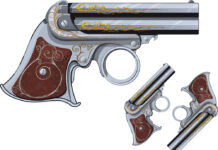



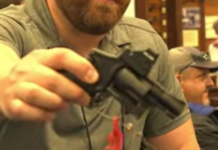
![What Level Holster Should You Be Using? [Video]](/wp-content/uploads/2024/04/Depositphotos_44548439_S-218x150.jpg)
![Case Study: Defensive Gun Use [Video] NSFW](/wp-content/uploads/2025/07/Depositphotos_282075792_S-218x150.jpg)


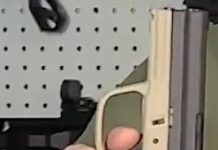
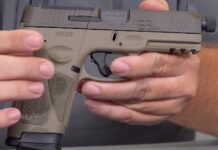

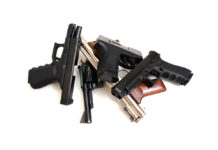
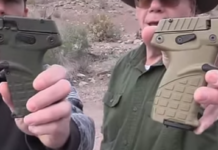


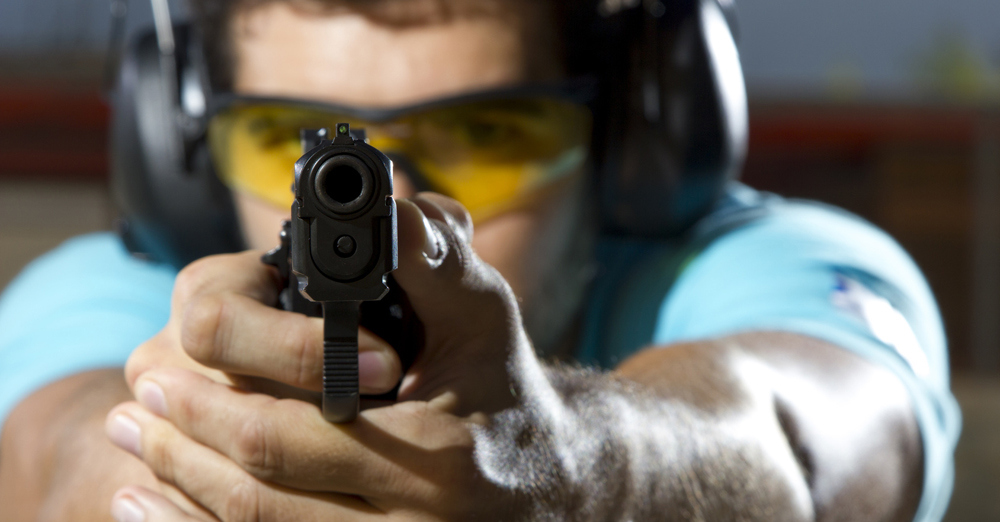


![Concealed Carry Or Martial Arts: Which Do YOU Need? [Video]](/wp-content/uploads/2023/04/Depositphotos_24063493_S-100x70.jpg)







![Optic Ready vs Milled slides? [Video]](/wp-content/uploads/2024/02/image-3-100x70.png)
![[Checklist] What Gear You Need To Take Pistol, Rifle & Shotgun Training Courses [Video]](/wp-content/uploads/2023/07/Depositphotos_275087632_L-100x70.jpg)
![What is in Carter’s 2023 EDC? [Video]](/wp-content/uploads/2023/07/Depositphotos_146856137_L-100x70.jpg)



Excellent article with a subject that isn’t stressed enough. Kudos.
whats a snap drill?
I was ready to call you an idiot because the whole article is about snap drills …
But then I realize it was spelled out in plain english …
Snap drill refers to the rifle drill where you go from — example — low ready to — on the buzz of the timer — snap the rifle into one of the firing positions either standing, prone or kneeling, etc and fire one shot/first shot. Check timer. That’s the basic idea.
Same idea John uses refers to the first shot draw from concealment with the conceal carry pistol.
Make sense?
Thank you for this article. I’ve been looking for some good training metrics and this fills the bill.
I’m sick of know-it-alls writing three words and titling it, “xyz you aren’t doing right”.
How do you know what anyone is doing right or wrong? Use some imagination, why don’t you?
Comments are closed.